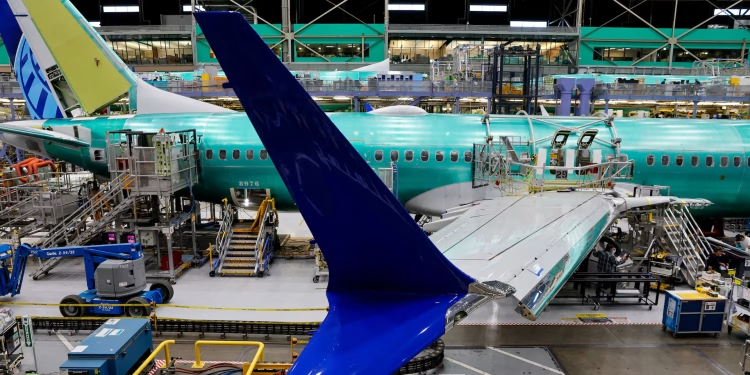Register here.
Increasing deliveries of the popular single-aisle jet is key to restoring Boeing’s financial stability, after years of production disruptions and crises that left it deeply in debt and losing money. Airplane manufacturers receive the majority of a customer’s payment when they turn over a plane.
The FAA said Friday that its safety inspectors “conducted extensive reviews of Boeing’s production lines to ensure that this small increase in production rate would occur safely.”
BOEING PLANS TO START RAPIDLY BUILDING UP PRODUCTION
FAA Administrator Bryan Bedford called Boeing CEO Kelly Ortberg on Friday to confirm that the manufacturer could increase the production rate to 42 planes, a person briefed on the matter said. Boeing plans to quickly begin increasing production as a result, the source added.
Workers at the company’s Seattle-area factories are preparing to increase the 737’s production rate by adding equipment for greater capacity, two other sources familiar with the matter said.
Boeing said it appreciates “the work of our team, our suppliers and the FAA to ensure we are prepared to increase production with safety and quality first.”
Shares of Boeing rose 1.2% after hours.
Boeing has produced 737s at higher rates in the past, but the supply chain is now under greater strain. Forgings, castings, engines and even interiors have all caused supply chain problems for aircraft makers in recent years, said aerospace analyst Glenn McDonald.
“Boeing seems to be better prepared for this acceleration than in previous ones,” he said.
Under heightened FAA oversight, the company took a cautious approach to stabilizing and then increasing production. Boeing has built up large inventories of parts and materials to guard against supply chain bottlenecks.
It had $11 billion in raw material inventories, according to its second-quarter results. That compares to $6.4 billion in inventory in 2018, when the company produced more than 50 of 737 planes per month.
Boeing also has $53 billion in debt, up from about $12 billion in 2018. Wall Street analysts expect Boeing to lose money again this year, but forecast a profit in 2026, which would mark the first profitable year for Boeing since 2018.
Last month, the FAA partially restored Boeing’s authority to issue certificates of airworthiness for the new 737 MAX and 787 planes.
This authorization was revoked for certain MAX planes in 2019, following fatal accidents in Indonesia and Ethiopia, and for wide-body 787s in 2022, due to production quality problems.
The Alaska Airlines incident in January 2024 prompted then-President Joe Biden’s U.S. Department of Justice to launch a criminal investigation.
Reporting by David Shepardson in Washington, Dan Catchpole in Seattle and Allison Lampert in Montreal; Editing by Rod Nickel and Edmund Klamann
Our Standards: The Thomson Reuters Trust Principles.









